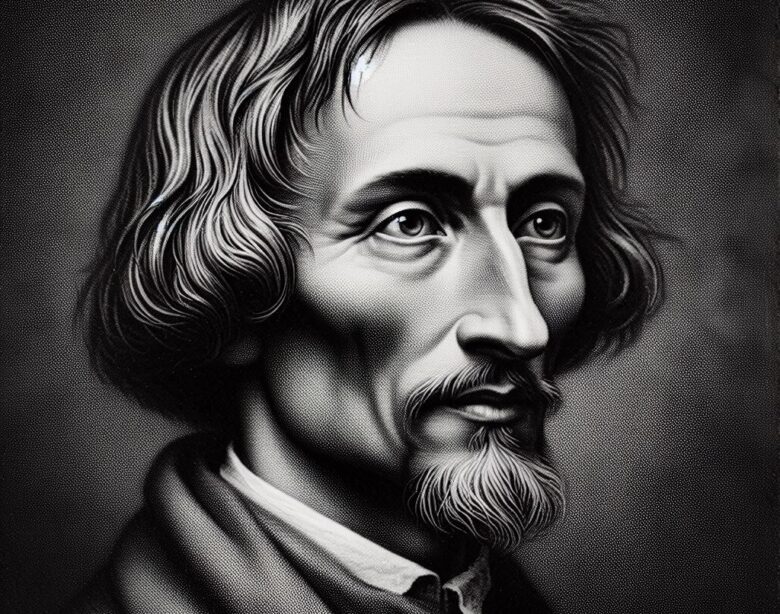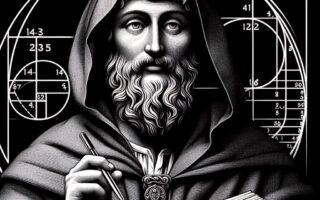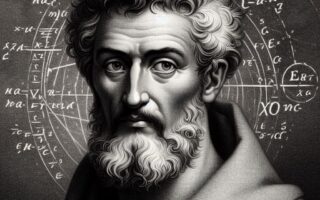Alfred of Saxony – Logic, Philosophy and Mathematics
Alfred of Saxony, born around 1320 and deceased in 1390, was an influential figure in medieval European intellectual life. He was a philosopher, logician, theologian, and mathematician who played a significant role in the early development of mathematical thought during the late Middle Ages. Alfred’s intellectual contributions are primarily rooted in logic, natural philosophy, and mathematics, which helped shape future European thought, especially during the Renaissance.
Early Life and Education
Alfred of Saxony was born in Saxony, a region in modern-day Germany, and received his early education in the intellectual centers of the Holy Roman Empire. He likely studied at universities in Paris, one of the most prestigious centers for learning during the medieval period. Paris was particularly important in philosophy, logic, and mathematics, which were closely intertwined studies during the Middle Ages.
During his academic journey, Alfred was influenced by the works of ancient Greek philosophers like Aristotle, as well as the writings of medieval scholars such as Thomas Aquinas and William of Ockham. The 14th century was a time of intellectual renewal in Europe, as scholars sought to reconcile ancient wisdom with emerging ideas in theology, philosophy, and science.
Contributions to Mathematics
While Alfred of Saxony is primarily known for his work in philosophy and logic, his contributions to mathematics are closely linked to his broader intellectual endeavors. Mathematics during the Middle Ages was not the abstract, highly specialized field we know today. Instead, it was integrated into a larger framework of natural philosophy and logic, with mathematicians and philosophers often engaging in discussions that would shape mathematical concepts.
Motion and the Concept of Continuity
One of Alfred’s most important contributions to the history of mathematics is his work on the nature of motion and the concept of continuity. In his writings, Alfred explored the philosophical and mathematical implications of continuous versus discrete quantities. This topic was of great interest to medieval scholars, as it had implications for understanding physical phenomena, such as the movement of objects and the passage of time.
Alfred’s work on continuity was influenced by earlier philosophers like Aristotle, who argued that motion was continuous, and the atomists, who posited that all matter and motion were composed of discrete, indivisible units. Alfred’s approach to this debate was characterized by rigorous logical analysis, which would later influence the development of calculus in the 17th century.
Kinematics and the Mean Speed Theorem
Alfred of Saxony’s work on kinematics, the study of motion, is particularly noteworthy. He was part of a group of medieval scholars known as the Oxford Calculators or Mertonian School, named after Merton College at the University of Oxford. These scholars, including Thomas Bradwardine, William Heytesbury, and Richard Swineshead, developed mathematical tools and concepts to analyze motion and change.
One of the key achievements of this group was the formulation of the Mean Speed Theorem, which states that the distance traveled by an object moving with uniformly accelerated motion is the same as the distance traveled by an object moving at a constant speed equal to the average of the object’s initial and final speeds. This theorem can be expressed in modern terms as: Distance = average speed × time.
Although the theorem was not originally expressed in algebraic form, its underlying concept was an important step toward the later development of kinematic equations. Alfred of Saxony played a role in the dissemination and refinement of the Mean Speed Theorem, contributing to its spread throughout Europe.
Mathematical Logic and Proportions
Alfred of Saxony also made contributions to mathematical logic, particularly in the context of proportions and ratios. In his philosophical works, Alfred explored the relationship between quantities, laying the groundwork for more advanced mathematical analysis in later centuries.
His exploration of ratios was part of a larger medieval interest in the mathematical properties of numbers and their applications to physical phenomena. Alfred’s work helped to advance the understanding of proportional reasoning, a concept that would later become essential in fields such as algebra, geometry, and physics.
Influence on Later Mathematicians
Alfred of Saxony’s contributions to mathematics and natural philosophy had a significant impact on later mathematicians and scholars. His work on motion and continuity, in particular, influenced the development of mathematical analysis in the 16th and 17th centuries.
Alfred’s ideas, along with those of his contemporaries in the Oxford Calculators, helped to lay the foundation for the later work of mathematicians like Galileo Galilei and Isaac Newton. The concepts of motion, continuity, and proportionality that Alfred explored were central to the development of calculus and the mathematical understanding of physical laws.
Impact on Natural Philosophy
In addition to his contributions to mathematics, Alfred of Saxony had a profound influence on the broader field of natural philosophy, the precursor to modern science. His work in logic and philosophy helped to clarify the relationship between mathematics and the natural world, and his writings were widely studied by later generations of scholars.
Aristotelian Influence and Critique
Alfred of Saxony was heavily influenced by the work of Aristotle, particularly in his treatment of natural phenomena such as motion and change. However, Alfred was not merely a passive follower of Aristotelian thought. He engaged critically with Aristotle’s ideas, especially in the context of mathematical reasoning and the analysis of motion.
In his critiques of Aristotelian natural philosophy, Alfred emphasized the importance of logical rigor and mathematical precision. His work contributed to the ongoing process of refining and systematizing natural philosophy, which eventually led to the scientific revolution of the 17th century.
The Intersection of Theology and Mathematics
As a medieval scholar, Alfred of Saxony was also deeply engaged with theology, and his work often reflected the close relationship between mathematics, philosophy, and religious thought during the Middle Ages. Alfred believed that mathematical truths were a reflection of the divine order of the universe and that studying mathematics could provide insight into the nature of God’s creation.
This theological dimension of Alfred’s work helped to ensure that mathematics remained an important subject of study within medieval universities, where scholars sought to reconcile faith and reason. His efforts to integrate mathematics into the broader framework of natural philosophy and theology contributed to the survival and growth of mathematical knowledge during a time when intellectual progress was often limited by religious orthodoxy.
Legacy
Alfred of Saxony was a pioneering figure in the history of mathematics, whose work on motion, continuity, and proportions helped to advance mathematical thinking during the Middle Ages. His contributions to the Mean Speed Theorem and his exploration of mathematical logic laid the groundwork for future developments in calculus and physics.
Alfred’s influence extended beyond mathematics, shaping the study of natural philosophy and helping to integrate mathematics into the broader intellectual currents of medieval Europe. His work was studied by later mathematicians and scholars, ensuring that his contributions to mathematical thought would have a lasting impact.
Although Alfred of Saxony is not as well-known today as some of his contemporaries, his work represents a crucial step in the evolution of mathematical reasoning and its application to the natural world. By bridging the gap between philosophy, theology, and mathematics, Alfred helped to ensure that mathematical knowledge would continue to flourish and evolve during a time of intellectual transition.
Please Visit Our Sponsors:
We only support vendors that we use ourselves in our home. The links below are our own links or affiliate links but know that we use all of these now, or have in the past. As the author/creator of this blog, I also tutor mathematics on Wyzant, sell on Etsy, create content on TpT, and learn Korean on Rosetta Stone.





